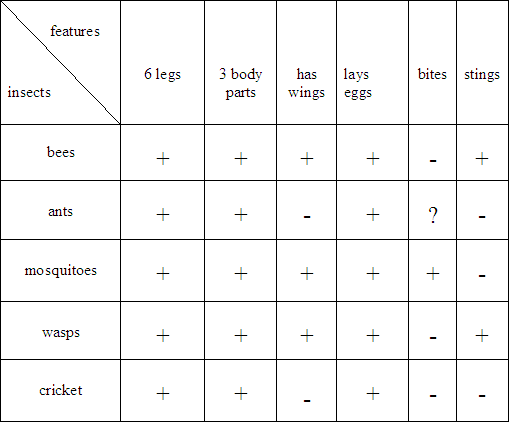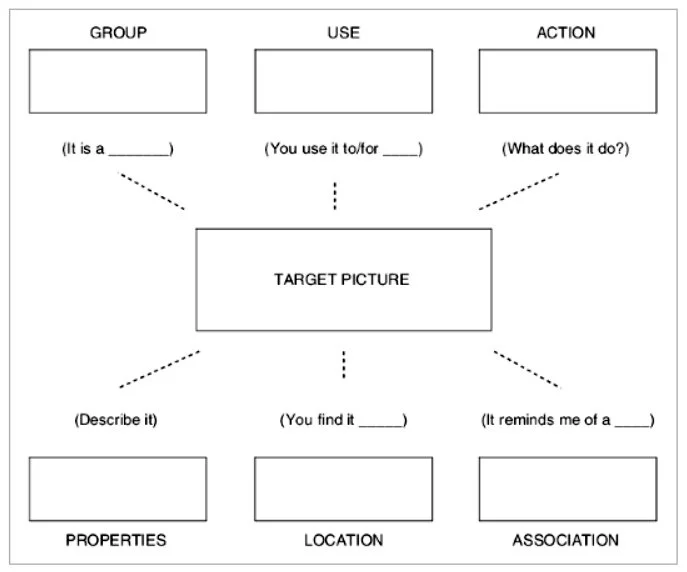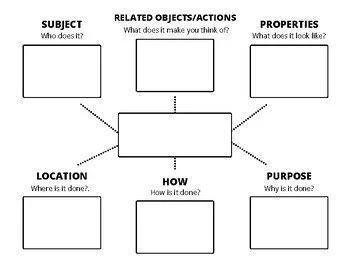Why You Should Use Semantic Feature Analysis
Semantic feature analysis is one of the few vocabulary strategies I remember learning about during my undergraduate studies. It fell off my radar for a while, replaced by loads of flashcards and context clues galore. Then, it started easing back on the scene through Dr. Karen and her work on semantic features. I was already obsessed with language processing hierarchy and over time I started to realize how the two were related. As I’ve continued to build my instructional skills for vocabulary growth, using semantic features has helped me structure my speech therapy sessions. I thought today we could chat about why semantic feature analysis works and how you can use it in sessions.
What is semantic feature analysis?
Semantic features are the concepts or characteristics that define a word. If you think about the concepts in the language processing hierarchy, you can use them to generate semantic features for nouns: category, function, synonyms, associations. Things are slightly different for verbs and adjectives. For verbs, we’re looking at synonyms and antonyms, where, when, and why questions, and associated nouns. For adjectives, you’re looking at synonyms and antonyms and associated nouns and verbs.
Typically, when we complete a semantic feature analysis, we complete a grid. The far left column is filled with words that share a category and the top row is filled with a variety of other features. Students fill the corresponding squares with either a plus or minus depending on whether the item has that feature.
While this is what I remember of semantic feature analysis, used for nouns, there are other methods too. These are similar to the Expanding Expression Tool and can be used for nouns, verbs, and adjectives.
Why semantic feature analysis works
Semantic feature analysis seems to get a lot of his research for aphasia, but what about our students with language impairments? There is research on vocabulary strategies that include semantic reasoning. Semantic reasoning, of course, includes the different components of semantic feature analysis. This type of reasoning has two big plusses in its column as far as I can tell.
It helps students engage in a deep understanding of vocabulary words. A lot of students have surface-level understandings of words. They might be able to match a target word to a definition or a synonym or explain a vaguely related concept that lets you know they at least have a familiarity with the term. And that’s great! I love it! But, we need to go deeper, especially if we’re working on academic resilience. Semantic reasoning and analysis are gateways for that.
It provides a meaningful strategy for word finding and verbal expression in students with word finding deficits. As I work with more and more neurodivergent students, I realize that word retrieval is often very difficult for them. It’s not always a question of knowledge—it’s a question of being able to organize the information in your brain and pull it out when you need it. Circumlocution strategies are important for these students too and semantic reasoning can help them with that.
How I’m using semantic feature analysis
After years of struggling to add some structure to my use of the language processing hierarchy, semantic feature analysis grids came to the rescue! I’ve been following a tiered approach to building my students’s vocabulary skills
Traditional Semantic Feature Analysis Grids
The first thing I do with students is introduce them to the traditional grids. Although I’ve primarily worked with nouns so far, you could also make your own grids for adjectives and verbs! I’ve found that starting with the grids (almost regardless of their vocabulary skill level) has several benefits.
First, the kids think it’s fun! I’m always impressed by the simple things that are really enjoyable for students. As a teletherapist, my students enjoy picking their stamp (using the annotate feature on Zoom) or the color of their pen. For in-person SLPs, students can pick a dauber, a sticker, colors, etc… Things that give them some autonomy tend to be really engaging!
Second, it’s an easy way to introduce features to students without a lot of instruction or faff. Even though the grids themselves typically have only a single word or short phrase, I use it as an opportunity to model semantic questioning. “Does the bee have 6 legs?” Does the bee have 3 body parts?” I trial going across each row and going down each column with each student to see what clicks best for them, modeling questions for each feature. Once they get the hang of it, I let them go about it independently, providing scaffolding as needed. And I go through a lot of charts. My goal is to get them familiar and comfortable with asking questions about different words.
Lastly, it does build confidence! Filling out a grid feels like something that most students can do, either independently or with minimal scaffolding. Anything that builds confidence is a win in my book!
2. Clarifying Parts of Speech
I came back and added this point in after I’d written all the rest because I realized it’s actually quite key to our work! The semantic features we discuss differ depending on what part of speech we’re talking about, and the whole point of working on this is for them to be able to do this independently! Knowing how to determine part of speech, then, is an important skill. I focus on the function of words and how they relate to the part of speech. This involves delving into the sentence, looking at the context, and deconstructing things. Really, it’s just another form of semantic questioning! “What is happening in this sentence? Where is the action? Who is doing it?” As long as students have some knowledge of parts of speech we don’t spend a ton of time here, but it’s definitely a helpful step!
3. Describing Graphic Organizers with Answer Choices
Once we’ve worked our way through a lot of grids, I move on to describing graphic organizers. There are so many options for these types of organizers, but I’ve particularly enjoyed ones that have answer choices. Some students have a difficult time coming up with category names, functions, etc…, so easing them into this work with answer choices has been a wonderful option!
Students can carry on with their stamps and stickers and daubers of choice as they make selections about different features. I continue modeling semantic questioning at the beginning as they expand their knowledge of vocabulary features. As they get the hang of it, they can start working independently with scaffolding as needed. Just like the grids, I like to go through a lot of organizers so that they get exposed to a lot of words.
After we answer all of the questions on the chart, I like to model a description or definition of the target word and sometimes ask the student to imitate me or generate their own. This also gives me a little bit of input into how comfortable and proficient they are with using their knowledge. If they don’t feel super comfortable or still have trouble using the information, I know to keep going with this step a little bit longer.
4. Describing Graphic Organizers without Answer Choices
Our next step is graphic organizers without answer choices. I think we all know what to do here! But, I like that I’ve preceded this with the answer choice option because students are able to learn the features without having to activate word finding skills. Once they’ve gotten the hang of the answer choice version, including using the information to describe and define, I move on to a version without answer choices. I’ll often need to start with more scaffolding to move them from one level to the next but eventually they’re able to fill everything in independently. Then we carry on with creating descriptions and definitions again! They should feel more comfortable with the process by now!
5. Use all of the above in context!
Once my students have mastered these steps with common (mostly tier 1) nouns, verbs, and describing words, we move on to contextualized vocabulary. Depending on what we’re working on, I like to have blank charts (all kinds!) to use with vocabulary from whatever we’re reading or listening to.
For example, last week two of my kids listened to Red Cat Blue Cat on Epic. I chose a selection of the words (which were all tier 1 or tier 2) and made a semantic feature analysis grid. Yesterday, one of my students was obsessed with the idea of playing an online claw game. So, we added the objects she won to a semantic feature analysis grid.
Amping it up, after we’ve read a book or watched a video on an academic topic, we often discuss the part of speech and then answer the semantic feature questions and/or write a definition or sentence using the word in context. Or, we’ll pick out target vocabulary before we begin working on a task or reading and complete those steps beforehand—it just depends on what we’re working on! So yesterday, we read a book about mummies and then worked through semantic questioning afterward because he already knew what a mummy was (he picked the book!), but it was a good opportunity to talk about words like “artifact” and broaden what we know about functions. Every session is different but semantic feature analysis helps a lot in many of them!
I hope you’ve found these ideas helpful for your language sessions! I’d love to hear whether you use semantic features in your vocabulary sessions or if you use another framework to structure your sessions.
Research
https://www.theinformedslp.com/review/calming-the-chaaos-in-language-literacy-therapy
https://pubs.asha.org/doi/pdf/10.1044/cicsd_32_F_85
https://pubs.asha.org/doi/10.1044/2021_PERSP-21-00067
https://www.theinformedslp.com/review/name-that-strategy
I’ve made the intentional choice to keep The Calm SLP ad-free. If you appreciate what I do here, there are a couple of ways to support me.
You can check out the products I offer in my TpT store. This will hopefully help you also!
You can also visit my Buy Me a Coffee link, though I’ll openly admit your donation will go to tea and books instead.


